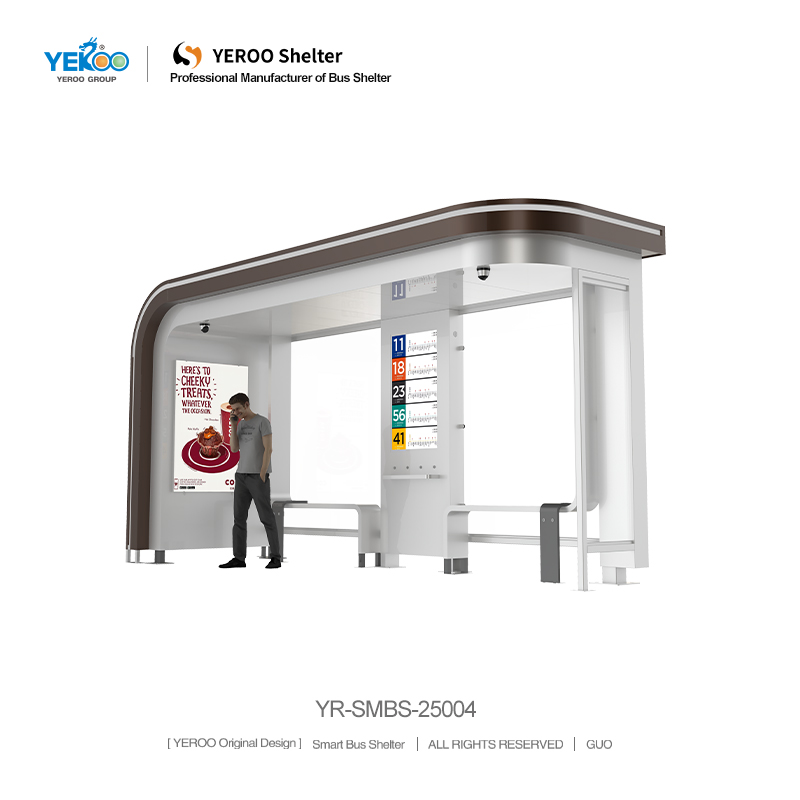How Does a Smart Bus Shelter Enhance Public Transport Systems
To gain audience users, public transport systems depend on efficiency, trust, and accessibility. Smart bus shelters have become instrumental to improving such systems. Beyond traditional bus shelters, smart bus shelters utilize technology to tackle problems such as unclear arrival times, passenger discomfort, and lack of operational visibility. Yeroo Group (https://www.yeroogroup.com/) is an industry leader in public infrastructure solutions and designs smart bus shelters to meet the needs of contemporary public transport. Below are the benefits brought about by smart bus shelters in the public transport sector.
Builds Trust with Real Time Transit Data to Enhance Perceptions of Reliability
A crucial perk of smart bus shelters is the ability to display real time transit data, which in turn builds passenger trust and minimizes anxiety. Yeroo Group integrates high brightness LCD and LED screens synced to the city's transit management systems which provide real time data on bus arrival times, route changes, and delays. For example, if a bus is stuck in traffic, the smart bus shelter will update the estimated time of arrival to keep waiting passengers informed. Real time data transparency increases perceptions of reliability when using public transport. One study showed real time data improved user satisfaction by 30% thus promoting more frequent use.

Focusing on the new consumer behavior to sustain the public transport system is essential. Assessing the gaps traditional shelters leave to the system, aids in developing innovations like the smart bus shelters.
Passenger Comfort is a Top Priority
Yeroo Group's Smart bus shelters really go above and beyond to offer patrons a greater sense of comfort, especially as someone waiting for a bus tends to be for a long time. To alleviate some of these discomforts, the shelters offer amenities such as a USB port to charge tablets and phones, heated elements and fans, and adjustable LED lights which change in brightness depending on if it is day or night. Some even offer touchscreen info panels with local transit maps, service updates, or local attractions to provide recreational opportunities for patrons. For instance, commuters waiting for a late bus with a dead phone may become frustrated if they cannot check for alternate routes. Getting people to see the value of public transport helps in boosting system ridership.
Collection of data and Smart Bus Shelters
Getting rid of the perception of discomfort about public transport dramatically improves system ridership. Smart bus shelters alleviate consumer discomfort, increase system ridership, and most importantly provide invaluable data for transit authorities to optimize route offerings.
The smart bus shelters built by Yeroo Group have innovative technology. They have built-in sensors that track the flow of passengers, assess how many people use the shelters at say different times of the day, and weigh different weather conditions like rain, wind, and temperature. The sensors also track the shelter status assessing broken lights and vandalism. This information helps the authorities decide how many buses to adjust during peak hours, dispatch maintenance teams, and assess how many shelters to add. If the sensors record more than 50 passengers at a smart bus shelter, the authorities will know to adjust bus routes to help prevent overcrowding. This approach also helps cut down the cost of public transport.
Incorporated technology also enhances the safety and security of passengers. The Yeroo Group shelters have 24/7 surveillance that is linked to local law enforcement, and there are emergency call buttons for help. They also have lights that sense motion and are programmed to turn on when someone approaches. They have also incorporated technology to deter vandalism, like tamper-proof screens and durable materials. Having a surveillance camera and a light that will turn on when a waiting passenger approaches will help the passenger feel safer.
For those anxious about travel, especially solo or during quieter times, these security elements provide peace of mind. This makes public transportation a more appealing option, positively impacting the reputation of the transport system.

Supports Urban Transport Sustainability Goals
Many cities have embraced the goal of making public transport greener and more environmentally friendly, which is exactly what the Yeroo Group's smart bus shelter is intended to help achieve. Yeroo Group's smart bus shelter takes public transport eco-friendliness to the next level by using energy-efficient components, including solar panels on the roof to power screens and lights, low-energy LED bulbs, and recyclable construction materials. Smart bus shelters made of solar-powered recyclable materials will help transit authorities and the public reduce their carbon footprint by decreasing reliance on the city's electrical grid and decreasing carbon emissions. Certain smart bus shelters will even have eco-sensors to control lights, heating, and air conditioning to save energy. These shelters will help cities integrate eco-friendly public transport infrastructure to reduce their carbon footprint and enhance the public transport system's eco-friendliness during operation.
Conclusion
Yeroo Group's smart bus shelter improves public transport systems in many ways: strengthening passenger confidence with up-to-the-minute information, enhancing comfort with easy-to-use amenities, improving operational efficiency using smart analytics, increasing safety with innovative security systems, and promoting eco-sensitivity.
Smart bus shelters are now fundamental pieces of infrastructure. They enhance the functionality, accessibility, and appeal of the public transport system. Building modern transport systems smart bus shelters will trigger a change in the modern traveler. They will be more likely to use public transport. This will result in reduced traffic, lower carbon emissions, and more friendly urban sprawl. Wouldn’t this be a public transport dream?


